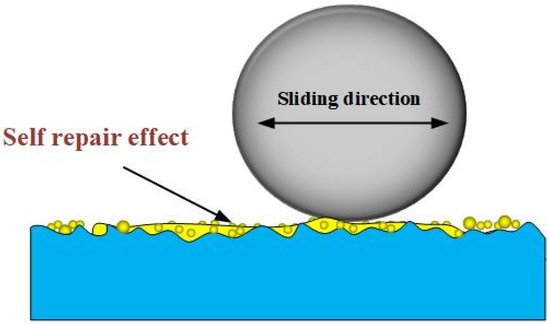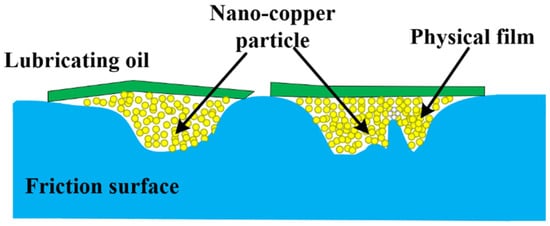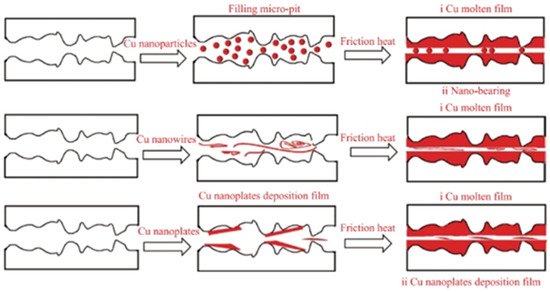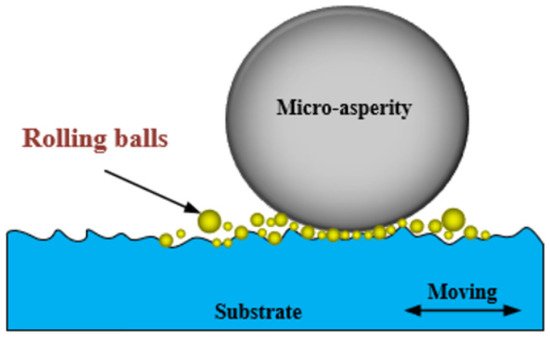Nanoparticles have as characteristics super sliding, extreme pressure, self-healing, etc., which can improve the friction reduction and anti-wear performance of sliding components, when used as lubricating oil additives. Nano-copper particles have a good synergistic effect with other antifriction agents, anti-wear agents, antioxidants and grease additives because of their low shear strength and grain boundary slip effect, showing a better anti-friction and anti-wear effect. However, nanoparticles are prone to conglomerate, and this causes a bottleneck in the application of dispersant for nano-copper in a lubricating oil system. The regulation of nanosized effect and surface properties has great engineering significance in compensating for the precision in manufacturing accuracy.
1. Introduction
With the enhancement of the environmental protection, the significance of green lubricating oil additives is growing, to meet the harsh restrictions on energy-saving and emission-reduction under the strict requirements of anti-friction and anti-wear
[1][2][3][1,2,3]. Nano-scale additives applied to lubricating oil have great advantages in the field of precision manufacturing equipment because of the character of their surface–interface effect and high specific surface area
[4]. In the process of operation of mechanical equipment, even if it is under the desired liquid lubrication condition, the interface of a friction pair can be in the boundary lubrication state under the influence of impact load, heavy load, low viscosity and repeated start-and-stop factors
[5]. Although the traditional lubricating oil additives can improve the lubrication performance of tribo-pairs, their high reactive activation energy results in tribochemical corrosion wear, and their application is greatly limited in the friction parts of high-precision equipment
[6]. Compared with traditional lubricating oil additives, nanoparticles have the unbeatable advantage of low film forming energy barrier, no film forming induction time, quick-forming of boundary protective film and micro-bearing effect on the friction surface–interface, further reducing equipment maintenance costs and improving the anti-friction and anti-wear performance of sliding components
[7]. The research on nano-copper as lubricant additive has greatly progressed in the field of tribology, but nano-copper easily loses the characteristics of nanoparticles because the surface activity is relatively high, the primary cause being that a large number of unsaturated bonds exist on the surface of nanoparticles. In addition, the agglomeration of nano-copper, which is caused by VDW (Van der Waals’ force), electrostatic action and hydrogen bonding between particles, increases the size of secondary forming particles and loses the characteristics of nanoparticles. The above situation has a negative effect in the stability of nano-lubricating oil systems and easily causes oil circuit blockages in industrial applications. Therefore, it is important to prevent agglomeration of nano-copper particles, involving suspension time improving, dispersion stability and the tribological properties of nanoparticles in lubricating oil for nano-lubrication technology
[8].





